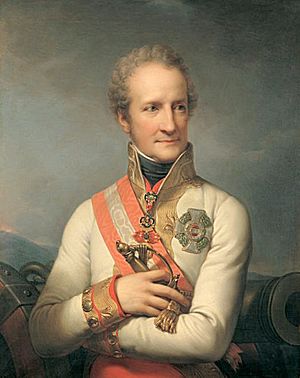Principality facts for kids

A principality is a type of country that is ruled by a prince or a princess. These kinds of states were very common a long time ago, especially during the Middle Ages. Today, there are still a few principalities left in the world.
Some well-known principalities that exist today include Andorra, Monaco, and Liechtenstein. You might also find areas within larger countries that are called principalities. For example, Asturias in Spain and Wales in the United Kingdom are sometimes called principalities.
There are also some places that call themselves principalities but are not recognized as independent countries by other nations. These are often called micronations. Examples include Sealand, which is an old sea fort near England, and Seborga, a small town in Italy. The Principality of Hutt River in Australia and the Principality of Minerva in the Pacific Ocean are also micronations.
Sometimes, the word "principality" is used to describe dependent areas, especially in places like Africa, Asia, India, and Oceania. For these areas, people often use the term princely states. This term is especially used if these states were once under the control of a European colonial power.
Contents
What is a Principality?
A principality is a territory or a state where the head of state is a prince or a princess. This means that a royal family member holds the highest power. The word "prince" comes from a Latin word meaning "first" or "chief." This shows that the prince was seen as the main leader of the area.
In a principality, the prince or princess usually inherits their position. This means they become the ruler because they were born into the ruling family. They often have a lot of power, but in modern times, their power might be limited by laws or a constitution.
Principalities in History
Principalities were very important during the Middle Ages in Europe. Many small states were ruled by princes. These princes often had their own armies and made their own laws. They were like mini-kingdoms, but their rulers had the title of prince instead of king.
Over time, many principalities joined together to form larger countries. Some were taken over by more powerful kingdoms. This is why there are fewer principalities today than there used to be. The ones that remain are often quite small in size.
Modern Principalities Today
Even though most principalities are gone, a few still exist as independent countries. These modern principalities are often very small but have their own governments and laws.
Andorra
Andorra is a small country located in the Pyrenees mountains between France and Spain. It is unique because it has two "co-princes." One is the President of France, and the other is the Bishop of Urgell in Spain. They share the role of head of state.
Monaco
Monaco is a very small and wealthy principality on the French Riviera. It is famous for its beautiful scenery and its Grand Prix car race. The Prince of Monaco is the head of state, and the country is known for its luxurious lifestyle.
Liechtenstein
Liechtenstein is another small principality located in the Alps between Switzerland and Austria. It is one of the smallest countries in the world. The Prince of Liechtenstein is the head of state, and the country is known for its strong economy.
Principalities Within Countries
Sometimes, the term "principality" refers to a region within a larger country. These areas are not independent nations. Instead, they are parts of a bigger state that might have a special historical status.
Principality of Asturias
The Principality of Asturias is an autonomous region in northern Spain. It is called a principality because the heir to the Spanish throne traditionally holds the title of Prince or Princess of Asturias. This is a historical title, and the region is fully part of Spain.
Principality of Wales
Wales is a country that is part of the United Kingdom. It is sometimes referred to as a principality because the heir to the British throne is traditionally given the title of Prince of Wales. Like Asturias, this is a title, and Wales is not an independent country.
What are Princely States?
The term "princely state" is often used to describe areas that were ruled by local princes but were under the control of a larger empire. This was common during the time of European colonialism.
For example, in India, before it became independent, there were many princely states. These states had their own rulers, but they were part of the British Empire. The British government had the final say in important matters, even though the local princes managed their own areas. These states were not fully independent principalities.
See also
 In Spanish: Principado para niños
In Spanish: Principado para niños

